![Comics We Love: ‘Screamland: Death of the Party’ [22-Page Preview + Interview]](http://townsquare.media/site/622/files/2011/11/untitled-1-1320818599.jpg?w=980&q=75)
Comics We Love: ‘Screamland: Death of the Party’ [22-Page Preview + Interview]

If you think you're fed up with the ghastly state of Hollywood horror, mystery and science fiction, where vampires are sunbathed supermodels with perfect skin and wolfmen are traffic-stopping adonises with chiseled abs -- and where everything else pretty much just sucks too -- then you should ask the real movie monsters how they feel. A werewolf, a creature from a familiar but legally distinct lagoon, an invisible man, vampires, aliens and more will tell you exactly what's what in Screamland, the hilarious Image Comics series that imagines the classic genre film icons of old living on into our modern age of Twilight, Nu-Star Trek and Comic-Con.
The latest trade paperback, Screamland: Death of the Party, goes on sale in December and is available now for pre-order. For more on the endearingly salacious book (which comes with an introduction by Matt Fraction), ComicsAlliance spoke with Screamland co-writer Christopher Sebela and and artist Lee Leslie, and managed to get more than 20 pages for you to check out for free.
Washed up is really a charitable way to describe the desperate plight of these once A-list performers who've found themselves replaced in favor of fresher faces, newer technology and and increasingly terrible media apparatus that pushes the O.G. monsters further and further into the fringes of popular culture.
Co-written by Harold Sipe and Christopher Sebela and illustrated by Lee Leslie and Buster Moody, Screamland: Death of the Party splices the grim show business humor of The Larry Sanders Show with the outlandish hijinks of a Scooby-Doo mystery as Wolfman Carl and former Space Path (The Original Series) icon Travis find themselves in the center of a Comic-Con murder mystery whose solution could mean newfound fame for all of the monstrous has-beens. Sadly, that fame will come in the form of the most insanely perverted and hideously violent supernatural sex tape ever filmed.

Although the majority of Screamland's cast are supernatural, the book plays it pretty straight with the character work, treating monsters like the amphibious Devil Fish as though they were the same kind of flawed and narcissistic people you'd find in all the best seedy Hollywood literature. It's that approach that makes scenes like Devil Fish's drug-fueled pool party seem so creepily realistic but at the same time laugh out loud funny. There is perhaps no moment more exemplary of Screamland's style than the book's opening scene, perfectly depicted by Leslie and Moody, where Devil Fish emerges stoically and speedo-clad from his Hollywood Hills swimming pool, surrounded by a fallen entourage of sickbros and starlets, and commits monster-suicide with the depraved detachment you'd expect from someone in a Bret Easton Ellis novel.

In other words, amazing.
From there Screamland takes us into the thick of it: FantasyScapeCon, a scene familiar to and even beloved by fans and working professionals, but the site of bitter loathing for the forgotten stars of yesteryear, many of whom are forced to charge money for autographs and endure all manners of undignified photographs and mind-numbingly tedious trivia questions. There we meet the werewolf film star turned direct-to-video actor Carl London (get it?) and his longtime chum Travis Walters (who played the plucky engineer on the original Space Path series) contemplating the depths of their disgrace over coffee and the latest trade rag. It's not long before the Invisible Man -- or "Izzy," as he is known -- announces that he will release to the media the brilliantly titled Phantasmagorgya, a homemade sex tape from 1977 starring all the Screamland players at the height of their Hollywood decadence.

The film is said to be so grotesque and so unholy that it will obliterate whatever shred of self-respect and reputation Carl and his fellow monsters have left while simultaneously catapulting them to the front pages of every tabloid. Carl and Travis decide that Izzy must be stopped.
Unfortunately for our heroes, someone has murdered the Invisible Man and absconded with the sex tape from hell. The only suspects the Screamland gang have are... each other. Their investigations will take them into the dark pasts of all their vampire, robot, alien and miscellaneous freak friends; they will learn terrible secrets that can never be forgotten, and see things too gruesome to be unseen. One of them is a human female having 1970s porno sex with a hideous mass of space goo.
Interview
ComicsAlliance: Screamland is a daft shooting gallery of genre references. There's everything from old movie monsters to Star Trek, Comic-Con, bad genre film, obviously crime drama and indeed pornography. Tell us about your love and/or hatred of this material and how they informed Screamland.
Christopher Sebela: I love it all. Even Star Trek, which I'm completely ignorant of, I love listening to fans talk about it, or any of these things they love that I don't understand. It gives me a little glimpse at myself when I get all geeked out over some random fandom. Even if it's something I don't like and we might poke fun at, I can still respect when a book about sparkly vampires becomes a behemoth bigger than anyone ever expected. But Screamland is sort of a catch-all of the things people love that will never get a seat at the respectable table, no matter how big they get. We just try to extract something from it by looking at the people who've made these things their lives and pursue them all-out, that no matter how wrong-headed it might be, you have to respect enthusiasm. Screamland is a fun book because we get to look at all this stuff from movies and tv and franchises from behind the protective glass of monsters.
Lee Leslie: Everything we satirize in the book absolutely deserves what it gets. Even the things I love, like the classic monsters or comic book conventions, rightfully deserve the shit we give them. But most of that stuff if just funny in-jokes that make us laugh. The more serious target of Screamland is the Hollywood culture, which is absolutely one of the worst things in the world today. In our version of Hollywood there are actual monsters, but in real Hollywood there are metaphorical monsters.
CA: Any specific inspirations?
CS: Between the three of us, there are way too many to mention, both in the writing and in the artwork. For every few references Harold and I drew from and snuck in there, Lee threw in a dozen visual gags and cameo appearances and in-jokes and things I haven't even uncovered yet. It's kind of the comic equivalent of friends getting together to play records for each other.

CA: Let's talk about the main characters. First, Wolfman Carl London.
CS: Carl London is a werewolf trapped in a world he never made, but he hasn't let it get him down. He became a huge hit in Hollywood, stuck around for decades, got sloppy and bored and rich and when CGI reared its ugly head, he was suddenly out of a job and all his money was unaccounted for and he had to get back to work, no matter how low-rent or dumb the movie or tv show, he'd take the job. As much for the money as the delusion of maintaining his fame. Now he's heading into the age where he's not getting work at all and makes a living doing the convention circuit. Oddly, he's kind of the optimist of the book, no matter how far things spin out of control, he still acts like everything's going according to plan.
LL: More than any other character from the first series, Carl epitomizes that Hollywood culture, I think. He's gone from being a hunted freak in the Old County to a celebrated one in a different kind of freak show. But this freak show allows him to give into every base whim he has and live a life without consequence. This story is about him finally having to face some of those consequences.
CA: Second, there's Travis. Almost the lone human character, he's meant to be a kind of not-dead version of James Doohan, I gather.
CS: Well, technically, and legally, he's just a dude who played an engineer in a space-related TV show of some years ago. I don't want to say Travis is the conscience of this book, because he's not exactly an upstanding citizen, but he's our entry into Screamland. He's got all the same trappings of faded fame as the monsters, he rubs shoulders with them as his friends, but he's still not one of them, so he's usually on the outside looking in. He's also the bummer, bring-down voice of reason to Carl's flights of fancy and a pretty decent straight man.
CA: Devil Fish is the most depraved of the lot. How did you zero in on him and Invisible Man as the Bob Crane/Auto Focus guys, as opposed to the rest of the cast?
CS: I think because they're the overlooked ones. They're the Stu Sutcliffe and Pete Best of monsterdom. They helped build this thing, but everyone always talks about the main four guys. So here's these two major iconic figures who are always just missing the brass ring, and that must make them feel kind of inferior, and inferiority is the wellspring of lots of horrendous life choices. Plus, this new volume of Screamland was always meant to expand the universe of Screamland, to branch out to all the different neighborhoods of a world where monsters are real, so we wanted to move past the main four to the people who lived in their shadows.
LL: There's always a libidinous nature to your classic monsters, but the Creature seems especially attracted to these women in his movies in a very detached but possessive way. Seems like a natural fit for a porn mogul to me. As for Izzy, you can't get any more literal with the voyeuristic nature of pornography than when you're dealing with an Invisible Man.
CA: Is there some dark significance to the sex tape being filmed in the summer of Star Wars?
CS: God, I wish that was intentional. Can we pretend it was? I'm going to claim it was from here on in. I have nothing against Star Wars, for the record.

CA: My favorite part of the book is actually the opening scene, at what's left of Devil Fish's filthy nighttime pool party. The way he emerges from the pool, so stonefaced and grim, made me laugh pretty hard. What is it about Lee's work that you like and what do you think he brought to Screamland?
CS: So many things to like about Lee's work. He gets Screamland and is as much a contributor to the story as Harold or myself. And he knows how to tell a story, to make broken parts of our scripts actually work on the page. He also packs panels full of little details and gags that surprise me even after I've stared at that page a hundred times. But I think it's the emotion of Lee's work I like the most, how he can really draw aggravation and glee and disgust and existential dread and you get it all just from a character's expression. He makes fish men tragic and robots with human brains truly menacing and he draws a really good pile of cocaine. It all works because you can tell Lee likes these characters, even if they're not all that fond of themselves.
CA: Each chapter of Screamland comes with its own bonus story that explores the pasts of whichever monster was the subject of that chapter's investigation. Unlike the main story, these backups are told very straight-faced and seem quite serious. They're also illustrated by a kind of who's who of indie comics artists whose work is appearing more from various publishers and in art posts on ComicsAlliance. Tell us about these backups and the artists involved.
CS: Well, we never consciously decided that the backup stories were going to be more serious, it just sort of happened that way, which I enjoy. It's kind of the challenge of, okay, you've spent 20 pages goofing on this character, now try and make them noble, or at least understandable.
Art-wise, it just worked out that we happen to be friends with a lot of talented people like Kevin Mellon, Dennis Culver, Kyle Strahm and Steven Sanders who were gracious enough to give us some of their time to illustrate these odd little bummers we came up with. Buster Moody did an amazing job coloring the book and we loved his stuff, so we asked him onboard for a backup. We just got lucky, all their stuff is so good and such a shift from Lee's that it really works with our change in tone. We're just grateful we got to work with them before they blew up into huge superstars.

CA: Chris, you've been working in the comics industry as a letterer and production guy for a while, but Screamland: Death of the Party is your first work as a comics writer. How did you hook up with the Screamland crew?
CS: Harold Sipe and I have been friends for years and we'd wanted to work together on something, so we'd talked about what a sequel to the first volume would look like and mapped it out pretty quick. Lee Leslie is an artist Harold had been wanting to work with who was a big fan of Screamland and when we saw his pages, we knew we totally had a book on our hands.
CA: Was it a harrowing experience, creating your first indie comic? What did you learn?
CS: Indie comics is totally harrowing. I used to admire indie comics in the same nebulous way you admire any sort of indie stuff, but now that I've done it, I respect anyone able to get a book together and out there. Especially on a monthly basis. It's a ridiculous amount of work, and only actual love of the medium and the story you're telling will get you through it. I learned a lot working on it, from all the production stuff of actually assembling a comic, to how to write with someone else to how to deal with snarky comments on the internet. It's been the most fun continuing education class ever.
LL: Since this is indie comics, we all have other jobs that pay the bills. So, Screamland was designed and drawn almost entirely in the hours after my kids went to sleep and I passed out at the drawing table, usually about 2 a.m. Getting our first monthly book out, and on deadline, I feel like I could write a book just about everything I learned.
CA: What's next for Screamland? Can you bring these wretched people any lower?
CS: We can and we have many plans to do so. Right now, Screamland is on hold until the trade comes out and we see what the order numbers look like. This'll give people a chance to catch up and give all of us a breather as we've been slaving away on this book for almost a year so far, but we would love to come back. We have the next arc - a mini tour guide of the Screamland world beyond Hollywood - written with guest artists already on-board and a new arc with Lee where we follow Frankenstein to Japan, where monsters are beloved superstars. Throw in monster funerals, retirement homes, McCarthy-esque hearings and secret alien cabals, we have about two years of stories we'd love to tell and monsters we'd love to drag out of the collective memory and make miserable one more time.
CA: What's next for Christopher Sebela and Lee Leslie?
CS: I have an original graphic novel due out from Oni Press next year with Dennis Culver and a sci-fi graphic novel coming out after that with an artist I can't name but who is completely exciting. I've got some shorter term stuff cooking that is too vague to comment on. Also, I waste a lot of time on the internet, so you could do worse than follow me on Twitter or Tumblr.
LL: Like every other comic creator in the world I currently have a couple different projects at varying stages with different publishers, but nothing concrete I can talk about. Other than that, I've returned to work on my webcomic, RiGBY.
22-page preview



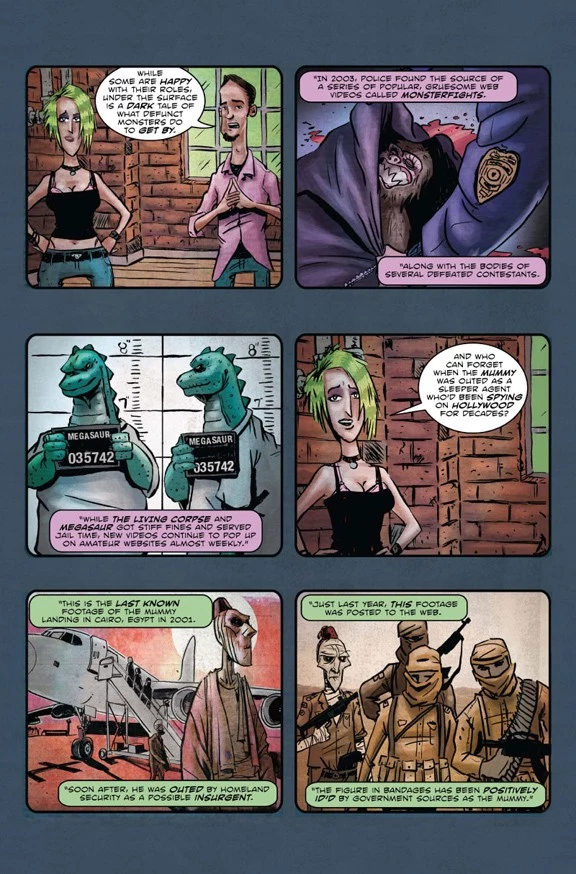

















Although Screamland: Death of the Party won't be available until December, it's important that we tell you about it now because what's known in the comics industry as FOC - final order cutoff -- is this week, which means it's the deadline for comics stores to order copies of books shipping that month. Most local comics stores offer customers the option of "pre-ordering" a book to insure that you will get a copy when it goes on sale, and that is often as easy as simply asking the shop order an extra copy for you to pick up upon release. Alternatively, you can pre-order from online retailers like Things From Another World. While it may be an inconvenience, it's extremely helpful to independent comics creators and publishers to make your wishes known to retailers in advance, and it also makes a greater quantity of books available for other readers who may wish to purchase them on a whim.
More From ComicsAlliance
![Giant Phones And Terrible Jobs In ‘Task Force Rad Squad’ #5 By Caleb Goellner And Buster Moody [Preview]](http://townsquare.media/site/622/files/2017/03/TFRS-5-FEATURED.jpg?w=980&q=75)
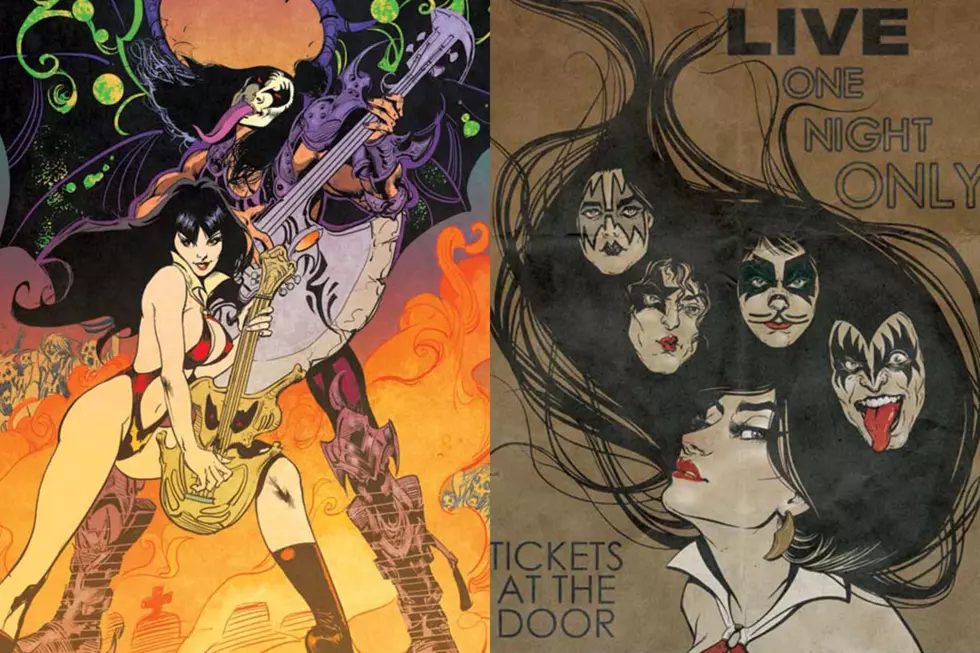

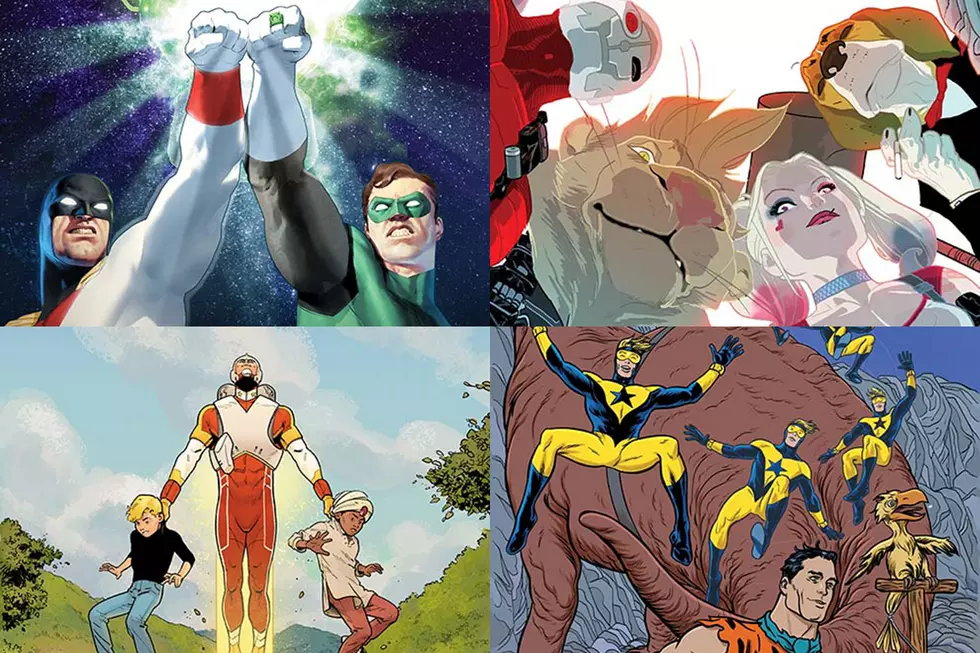
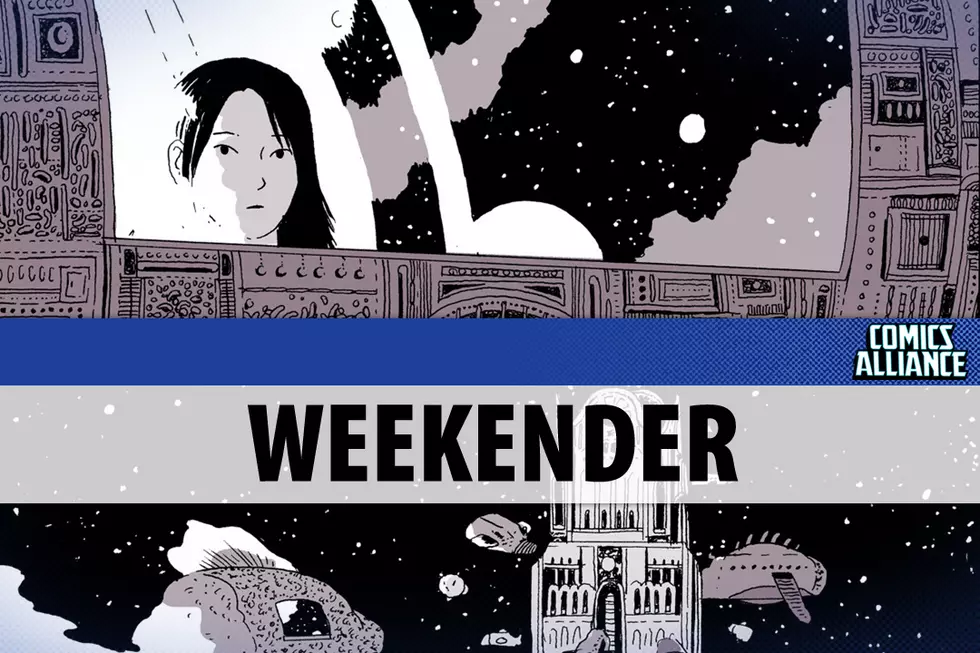
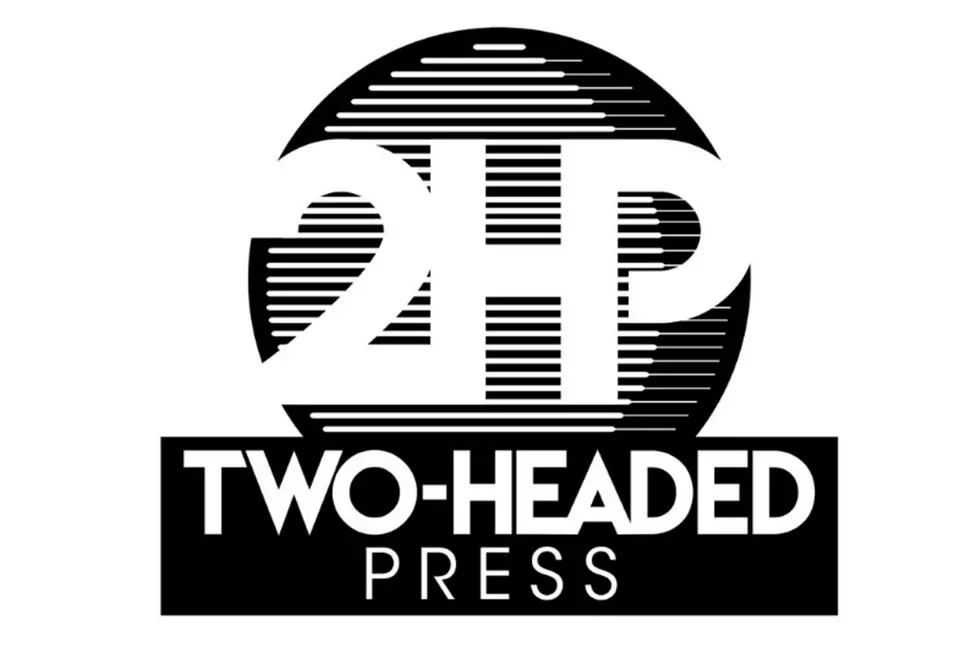
![Christopher Sebela And Niko Walter Get ‘Demonic’ At Skybound [Preview]](http://townsquare.media/site/622/files/2016/05/Demonic-Featured.png?w=980&q=75)

![Christopher Sebela Operates a High-Concept Romance in New Oni Series ‘Heartthrob’ [Interview]](http://townsquare.media/site/622/files/2015/12/heartthrob1.jpg?w=980&q=75)
